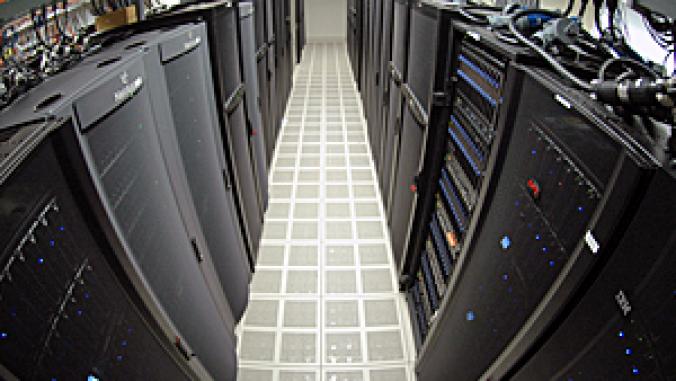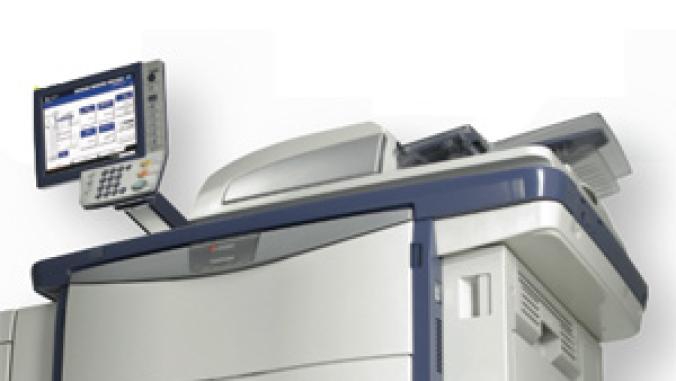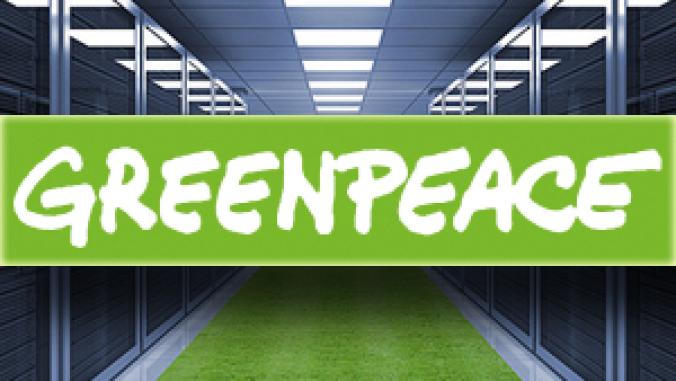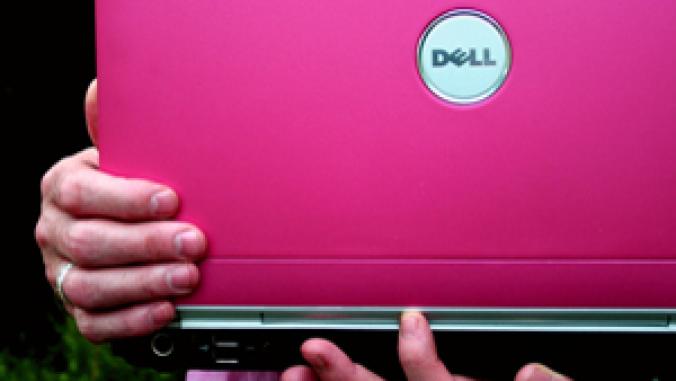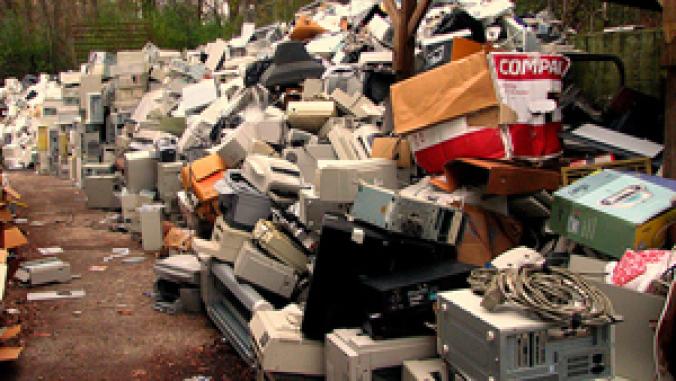HP Makes Big Additions to Eco Solutions Program
With new servers, printing solutions, an upcoming "telepresence-lite" program and new environmental commitments, Hewlett-Packard today announced several expansions to its overall green IT program.

At a meeting here today, Hewlett Packard executives unveiled several new additions to its Eco Solutions green IT program, including a new line of servers, printing hardware and software solutions, an upcoming "telepresence-lite" program and new company-wide environmental commitments.
HP's Bonnie Nixon kicked off the announcements by highlighting how far the company has already come in improving the environmental performance of its products: Since 2005, she said, the company's desktop PCs have improved 40 percent in energy efficiency, and HP aims for another 40 percent improvement by 2011.
That 40 percent goal -- which equals 1 billion kilowatt-hours of electricity savings, or enough to power a town of 90,000 people for a year, according to HP's Steve Hoffman -- will be achieved through a number of elements of HP's work, including designing energy-efficient hardware, expanding green data center practices, consumer behavior change, and enabling enterprise customers to improve the efficiency of their products.
New Servers, Updated Data Centers
At the data center level, HP today unveiled 11 new Proliant G6 servers, doubling the company's total line of Proliant servers. The new servers are 50 percent more energy efficient than products sold in 2005, according to IBM's Doug Oathout, and two of them are the first servers to be certified under the U.S. EPA's new Energy Star rating for servers, which launched last month.
The new servers manage themselves to optimize power use -- with intelligence built in, the new line can identify low-demand times of day and switch to low-power modes for those times. Oathout estimated an ROI of less than a year for these machines.
Oathout also laid out some details of two new data centers that HP is developing. The first, in Wynyard, England, is a retrofitted warehouse that will use outside air to cool the facility 90 percent of the time, which will save the company an estimated 40 percent over conventional data centers. Another facility in Tulsa, Okla., includes an innovative -- and enormous -- 800,000 gallon chilled-water storage tank that can cool the entire facility for up to eight hours, enabling HP to take the facility off the grid at times of peak demand.
Green Printers and the Greening of Fleets
On the printing side of HP, Stacey Wueste, the company's VP of the Worldwide Small and Medium Business team for imaging, laid out some of the new developments the company is taking on.
First was the growth of HP's Eco-highlights label, which launched in May 2008 and now includes 150 products carrying a label showcasing the environmental attributes of HP printers, PCs, monitors and other products.
Hewlett Packard is also developing an update to its Web Jetadmin printing-fleet management software to add an environmental reporting facet to the program. Starting as soon as this summer, HP will include an Eco Solutions report for the Web Jetadmin software, which will allow IT managers to see at a glance how many devices across an entire network have duplex printing capabilities or power-save features -- and, more importantly, which of those printers have these green features enabled.
The scale and potential savings from these endeavors is substantial: Wueste said that HP shipped 25 million printers in 2008, and customers like 3M and Viacom have used HP's Managed Print Services solutions to save significant money by optimizing their printer fleets: 3M said it saved over $3 million in the first two years of a project that consolidated printers and used the Web Jetadmin to centralize management of the printer fleet.
Telepresence for everyone
Perhaps the most potentially impactful announcement today was also the least fleshed-out: Steve Hoffman from HP's Personal Systems Group announced that the company will launch later this year a new technology called SkyRoom.
A potentially game-changing technology, Hoffman described the system as allowing telepresence-like interaction from any workstation, at a fraction of the cost and with many times the potential impact of HP's high-end (and high-cost) Halo telepresence suites.
SkyRoom can enable employees to skip business travel, conducting virtual meetings from their desks and saving companies huge travel costs and the associated environmental impacts. SkyRoom can also be used for streaming huge amounts of data, whether it's HD video or project models, in what Hoffman called "less than a blink of an eye latency."
SkyRoom is expected to be available later this year, and a rough estimate from Hoffman puts the cost at less than $1000 per seat, the amount that HP estimates is the cost to send an employee from San Francisco to New York City for a meeting.
More details about these and other announcements from Hewlett Packard are online at http://www.hp.com/go/ecosolutions/reduceimpact.
HP's Bonnie Nixon kicked off the announcements by highlighting how far the company has already come in improving the environmental performance of its products: Since 2005, she said, the company's desktop PCs have improved 40 percent in energy efficiency, and HP aims for another 40 percent improvement by 2011.
That 40 percent goal -- which equals 1 billion kilowatt-hours of electricity savings, or enough to power a town of 90,000 people for a year, according to HP's Steve Hoffman -- will be achieved through a number of elements of HP's work, including designing energy-efficient hardware, expanding green data center practices, consumer behavior change, and enabling enterprise customers to improve the efficiency of their products.
New Servers, Updated Data Centers
At the data center level, HP today unveiled 11 new Proliant G6 servers, doubling the company's total line of Proliant servers. The new servers are 50 percent more energy efficient than products sold in 2005, according to IBM's Doug Oathout, and two of them are the first servers to be certified under the U.S. EPA's new Energy Star rating for servers, which launched last month.
The new servers manage themselves to optimize power use -- with intelligence built in, the new line can identify low-demand times of day and switch to low-power modes for those times. Oathout estimated an ROI of less than a year for these machines.
Oathout also laid out some details of two new data centers that HP is developing. The first, in Wynyard, England, is a retrofitted warehouse that will use outside air to cool the facility 90 percent of the time, which will save the company an estimated 40 percent over conventional data centers. Another facility in Tulsa, Okla., includes an innovative -- and enormous -- 800,000 gallon chilled-water storage tank that can cool the entire facility for up to eight hours, enabling HP to take the facility off the grid at times of peak demand.
Green Printers and the Greening of Fleets
On the printing side of HP, Stacey Wueste, the company's VP of the Worldwide Small and Medium Business team for imaging, laid out some of the new developments the company is taking on.
 |
First was the growth of HP's Eco-highlights label, which launched in May 2008 and now includes 150 products carrying a label showcasing the environmental attributes of HP printers, PCs, monitors and other products.
Hewlett Packard is also developing an update to its Web Jetadmin printing-fleet management software to add an environmental reporting facet to the program. Starting as soon as this summer, HP will include an Eco Solutions report for the Web Jetadmin software, which will allow IT managers to see at a glance how many devices across an entire network have duplex printing capabilities or power-save features -- and, more importantly, which of those printers have these green features enabled.
The scale and potential savings from these endeavors is substantial: Wueste said that HP shipped 25 million printers in 2008, and customers like 3M and Viacom have used HP's Managed Print Services solutions to save significant money by optimizing their printer fleets: 3M said it saved over $3 million in the first two years of a project that consolidated printers and used the Web Jetadmin to centralize management of the printer fleet.
Telepresence for everyone
Perhaps the most potentially impactful announcement today was also the least fleshed-out: Steve Hoffman from HP's Personal Systems Group announced that the company will launch later this year a new technology called SkyRoom.
A potentially game-changing technology, Hoffman described the system as allowing telepresence-like interaction from any workstation, at a fraction of the cost and with many times the potential impact of HP's high-end (and high-cost) Halo telepresence suites.
SkyRoom can enable employees to skip business travel, conducting virtual meetings from their desks and saving companies huge travel costs and the associated environmental impacts. SkyRoom can also be used for streaming huge amounts of data, whether it's HD video or project models, in what Hoffman called "less than a blink of an eye latency."
SkyRoom is expected to be available later this year, and a rough estimate from Hoffman puts the cost at less than $1000 per seat, the amount that HP estimates is the cost to send an employee from San Francisco to New York City for a meeting.
More details about these and other announcements from Hewlett Packard are online at http://www.hp.com/go/ecosolutions/reduceimpact.
